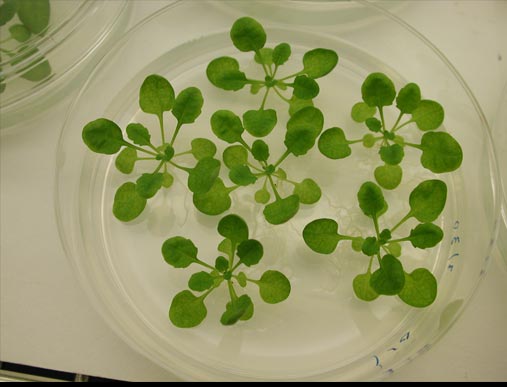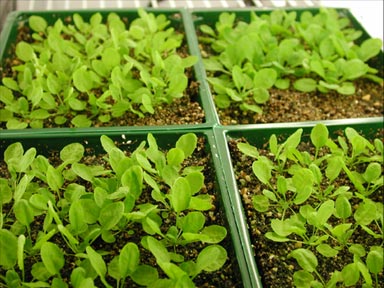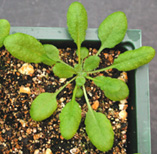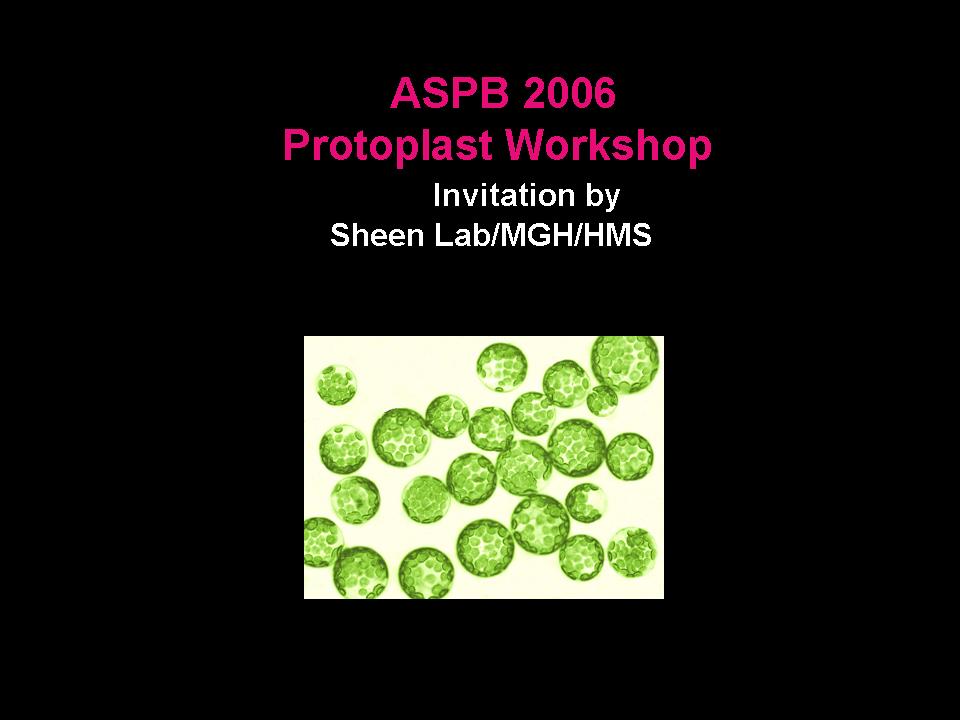| 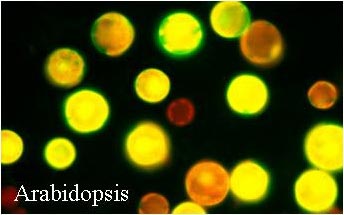
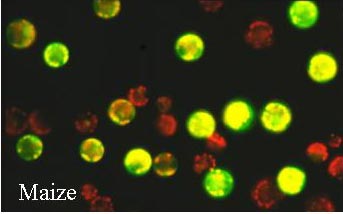
|
Figure 2. High transfection
efficiency of Arabidopsis and maize mesophyll protoplasts. Arabidopsis
protoplasts were transiently transformed by the PEG method. Maize
protoplasts were transiently transformed by electroporation. A cytosolic
GFP marker was used to visualize the transformation efficiency.
The mesophyll protoplasts showing only red chlorophyll autofluorescence
are untransformed. The transformed cells appear yellow, orange,
and/or green. The transformation efficiency is 90% for Arabidopsis
protoplasts and 40% for maize protoplasts. Scale bar 35 m (Arabidopsis)
and 25 m (maize). |
 |
Figure 3. Protoplast transient
expression assays. Arabidopsis and maize mesophyll protoplasts are
versatile systems for the elucidation of protein activities and
functions in plant signal transduction pathways. Diverse signal
responses have been detected in mesophyll protoplasts based on analyses
of reporter gene expression. The nucleus of the Arabidopsis mesophyll
protoplast is revealed by a nuclear GFP marker. Chloroplasts show
red chlorophyll autofluorescence. Flg22, 22-amino acid peptide
elicitor derived from pathogenic bacterial flagellin; PKs, protein
kinases; PPs, protein phosphatases; TFs, transcription factors.
UBQ, a constitutive ubi-quitin promoter.
(click this figure to show full size image) |
